Award-winning 16-year-old campaigner Fatima Saad Al Mohannadi talks to Q Life about her new book and raising awareness of autism – a very personal cause.
Fatima Al Mohannadi is a remarkable 16-year-old student at Qatar Academy in Al Khor. Her family’s experience and acceptance of her autistic sister has sparked a strong desire to raise awareness about the condition.
Fatima’s passion for advocacy has already led her to write a book titled ‘Ana o’ Haya.’ Q Life met with Fatima to learn more about her inspiring story of personal growth, accomplishments, and the initiatives she has undertaken to make a positive change in her community and beyond. From her award-winning efforts to her commitment to youth empowerment, Fatima’s story is a testament to the transformative power of determination and compassion.
What inspired you to write your book ‘Ana o’ Haya’?
Personally, ‘Ana o’ Haya’ talks about the journey of discovering that my little sister has autism. My little sister taught me the idea of acceptance and that is one of the most important lessons I have learned, which is to accept people as they are. At first my family struggled with the diagnosis, so I decided to write this story to raise awareness and spread it as much as possible to the community.
Can you walk us through the journey of getting the book published?
My one goal when thinking about publishing the book was to ensure that it remained a non-profit project, solely for the purpose of raising awareness. I contacted various bookstores, and after some searching, I found one that embraced the non-profit idea. Eventually, the book was published, and I’m delighted it received support from many people.
Can you tell us about the outcomes you’ve seen from your ‘You Are Not Alone’ autism awareness campaign?
My project ‘You Are Not Alone’ aims to increase awareness of autism. I started this project back when I was in sixth grade because I realised there is no widespread acceptance of awareness about autism. I’m proud to say that it has led to significant changes, particularly in my school, and I’m hoping to expand it in the future. People now have a better understanding of autism. Misconceptions about it being a disease have been clarified, and there is more acceptance in the community. I’m really happy to see that change because of my project.
How does it feel to be honoured with the Akhlaquna Junior Award in 2020?
Winning the Akhlaquna Junior Award was a moment of immense joy for me. It’s an award that recognises ethics and morals. Being recognised by Her Highness Sheikha Moza Bint Nasser was truly humbling, and I hope it continues to inspire others to strive for the Akhlaquna Junior Award.
View this post on Instagram
How has the community’s reaction been to your various initiatives and accomplishments?
I have received unconditional support from many people, especially my family. My mum and dad have been a big catalyst to shape who I am today and have played a crucial role in my journey. I’ve also received recognition from various individuals who believe in the importance of my accomplishments, which motivates me to continue these initiatives.
What has been your proudest moment so far?
Winning the Education Excellence Award, specifically the Platinum Medal, has been my proudest moment. It was a tough achievement to get, and I’ll never forget the emotions I felt – tears, smiles, and an overwhelming sense of accomplishment.
Dr. Renee Richer first came to Qatar in 2007, to teach biology at Weill Cornell Medicine in Qatar, a Qatar Foundation partner university. Having grown up in rural America, Dr. Renee has always held an innate appreciation for plants and animals. As a young student, she focused on biological studies and naturally continued down that path throughout her career.
During her time in Qatar, Dr. Renee was drawn to the desert landscapes. The more she learnt and experienced, the more she wanted to share with others. She went on to co-author Hidden Beauty, a definitive guide of plants in Qatar, featuring stunning visuals of native flora throughout Qatar. Q Life sat down with Dr. Renee to learn more about her book and her dedication to documenting Qatar’s flora and fauna.
Can you tell us about your book Hidden Beauty?
The book Hidden Beauty was written to engage everyone from professional botanists and those doing Environmental Impact Assessments to the public and children. The book uses photos to illustrate different features of plants and display the sheer beauty of desert plants of Qatar. There are also images of the urban environment showing the beauty of the “old Doha” and plants making their way into the city.
What was the inspiration behind writing Hidden Beauty?
Living in Qatar, I felt the desert held so much excitement and interesting plant life. I just wanted to share with others my experiences in the desert. I want others to see the desert through my eyes, my perspective. I hope that the reader can start to appreciate the plant life and its value and see, with a fresh viewpoint, the plants of Qatar. Hopefully, the book will inspire others to look at their surroundings.
What was your most memorable moment when writing your book?
I took a year off from my university work to finish the book. For a year, I did nothing but look at pictures of plants and read and write about plants. It was an amazing time for me, I was content. I hope I will get another opportunity to write more about the plants of Qatar.
What makes Qatar’s nature unique?
Because of the extreme conditions, you see organisms that are uniquely adapted to the environment. There are plants, animals, fungi, lichens and microbes that are adapted to these especially harsh conditions. When considering the flora of Qatar, it is a unique assemblage of Asian and African species that have been established on the peninsula as they migrated between the continents before sea levels rose to their current levels about 6000 years ago.
Is there anything that you found to be unknown or misunderstood about Qatar’s nature?
The comment I hear most is that “there is nothing out in the desert”, and that it is a “barren landscape”. Hidden Beauty was designed to showcase just the opposite. It illustrates the diversity and beauty of desert plants. There is a rich flora in Qatar that still needs to be explored and documented. Taxonomic work needs to be done as there are likely unique species still to be identified.
If someone was visiting Qatar for the first time, what places would you recommend they visit to experience the best of Qatar’s nature?
There are so many stunning places to visit. Umm Tais on the northern tip of Qatar is beautiful with a complex assemblage of coastal intertidal plants, sand bars, and a great place to picnic and swim for the day. Fuwairit also has a very diverse flora, the most diverse I have witnessed in Qatar, in part thanks to the varied landscape. To the southwest, I would recommend Al Kharrara. The landscape is covered by alluvial rocks washed down from Saudi Arabia millions of years ago. Lastly, the Inland Sea area is unparalleled for its immense microbial mat communities, comparable to Yellowstone National Park in the US. There are many others with special features.
During your time in Qatar, how have you witnessed the connection Qataris have with their environment? How is it unique compared to other countries?
I’ve been touched by the passion the people of Qatar have shown for the environment. While out in the desert taking pictures of plants, I’ve encountered many who want to see more emphasis on protecting the environment and celebrating the unique beauty of nature in Qatar. Traditional activities like falconry and winter camping are also an expression of a unique relationship with and appreciation of the desert.
What do you believe we can do to make the next generation more informed about their environment?
I hope that more students get to study Zoology, Botany and Environmental Science, with a focus on desert environments. It is also important that students get to spend time in the desert.
When we become familiar with plants or animals, recognise them and understand their special attributes, we are making an important connection that facilitates appreciation and protection. By illustrating these special attributes in Hidden Beauty, I want to help people build a better and stronger relationship with nature.
Nada Ali Bahzad is an inherently passion-driven individual. When she graduated from university, she could not stop but to think about her next chapter as a professional. When she discovered with dismay that only a few opportunities to apply her freshly acquired skills were opening up to her, Nada took her future into her own hands, forging her own path to success.
In 2018, an advertisement for an incubation programme at the Qatar Business Incubation Center inspired Nada. What if she too could apply her skills to launch an innovative entrepreneurial project in only 10 weeks? Convinced by this mission, Nada applied to the programme with the intention of creating an impactful business venture that would benefit her professional career as much as her fellow youth.
For Nada, it was clear that her path was to ensure no one in Qatar struggles with launching their professional career.
“I had the idea of developing a platform to centralise all career development opportunities in Qatar,” Nada says. “I came up with the idea of offering online services to Qatar’s youth, supporting recent graduates in their professional and personal development”. Inspired by the Arabic word for ‘pathway’, Nada launched Masar, a forward-looking digital hub for youth empowerment and development.
The future is bright for Masar. “I have a long-term plan for Masar. God Willing, it will address a lot of needs and provide services that the youth requires in our market”, says Nada.
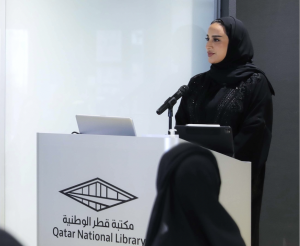
In the course of her entrepreneurial journey, Nada stumbled upon Teach for Qatar whilst visiting a career fair. As a non-governmental organisation, Teach for Qatar reintegrates exceptionally talented leaders into the public school system, through a two-year teaching and leadership development programme.
“The beautiful thing about this is that all these new teachers have different backgrounds and when we go into the classrooms of public schools in Qatar, we bring in our own basket of knowledge and expertise and we share it with the students in our own way,” she says.
Nada’s time as a teacher left a strong mark on her as a person. “It was a beautiful journey, and what I always say is that I did not simply teach English for two years. I taught values, I created impact, I transformed lives”.
In her role as Senior Programme Development Officer at Qatar Reads, Nada’s passions for education and serving others merged into one. Today, it is with pride and honour that she contributes to the success of a Qatar Foundation programme that communicates the importance of universal reading.
“Serving others is an important point for me in terms of entrepreneurship and education,” she confides. “I feel a big sense of self-empowerment by giving others the chance to be empowered”.
From her London town, Harriet Gyamfuah hopped on a Qatar Airways flight nearly 14 years ago to set foot in Doha. More than a decade later, she has become an integral part of Qatari society, having traded her burgundy stewardess uniform to embrace the spirit of Qatari entrepreneurship.
Harriet has always been guided by her ambition to reinvent and improve the relationship between organisations and their audiences. Creatives Amplified was born from this quest for success. As one of Qatar’s thriving boutique agencies, Harriet’s firm was the result of her years of experience across the fashion, lifestyle and hospitality sectors. Today, she leads her team of creatives to new heights.
The Doha-based publists have a star-studded clientele. Over the past years, their expertise and dedication has led them to work with leading international brands like Prada, Celine, and Liberty of London. Most recently, Harriet and her colleagues had the chance to collaborate with Naomi Campbell, ensuring the success of Campbell’s Fashion for Relief initiative, which was held in Qatar.
“From London to Qatar, my tribe has been a group of women. Let’s start with my own mother, who even though is in the UK, is my greatest supporter. My company itself is based on amazing women from different walks of life.”
From her time in Qatar, Harriet discovered a melting pot of different personalities and nationalities all coming together. It is this diversity that keeps her thriving, allowing her to meet women from various backgrounds and horizons. For Harriet, there is no doubt: Doha’s melting pot is one of many appeals that pushed her to stay in Qatar for as long as she has.
“International Women’s Day comes once a year in the calendar. However, living in Qatar, every day is International Women’s Day.”
“Qatar is home to many great female leaders, confides Harriet. It is a country that supports and champions women”. When meeting such inspiring female leaders, Harriet follows suit in the evergrowing country that paved her own path to success. With so much talent around her, she continues to embrace all opportunites to shine brighter and champion those around her.
Nawaal Akram dreams big.
After being diagnosed with Duchenne muscular dystrophy at the age of 6, Nawaal was forced to leave her formal education behind at age 10 when her school did not accommodate her. Nawaal’s desire to grow, learn and make an impact within her community – and around the world – nevertheless remained limitless. Her ambition propelled her to explore new paths, meet people from all walks of life, and achieve milestones she never thought would be within her reach.
View this post on Instagram
Now at 24, Nawaal is a proud disability rights activist, producer and consultant. She is also proudly back in school, pursuing her educational journey at Awsaj Academy.
“Continuing my education has given me the possibility to look at what I can do in the future, advance the skills that I already have and possibly use this knowledge to create a better world”. With the support of her parents, Nawaal felt empowered to use her voice to speak up, guided by the ambition of pushing for universal access and education for all children with disabilities.
“We still have so much to do and so far to go to make sure that every child or young adult with a disability is able to receive education like I do now,” Nawaal acknowledges. “For me to be able to do that important work, it starts with first receiving my diploma; and I’m almost there”.
When asked about her greatest accomplishment, Nawaal highlights the support she is able to provide to other children and parents who are facing circumstances similar to those of her past.
“To give their parents the support my parents didn’t have, to create a community for them where they can find safe spaces and feel represented: for me, that makes me feel accomplished”.
Dedicated to her community, Nawaal feels uplifted by the women that surround her on a daily basis. “I think I’ve come this far not just by myself, but by women in everyday life: whether it’s professors, my mother, or role models that have really helped me shape the way I want my future to be”. To give back, Nawaal founded Equal Access, a community programme to mentor global youth about how to advance disability rights and garner support.
Nawaal’s dreams for the future are as big as her ambitions were as a young girl. “I hope that I’m able to promote disability diplomacy. It is very important that we encourage nations around the world to cooperate with each other over disability rights and how to advance them”.
Qatar enjoys a magnificent array of flora and fauna across its landscape. Qatar’s most prolific nature and underwater photographer, Azzam Al Mannai, captures it all.
Azzam’s passion for the ocean started at a young age. “I was six years old when I started swimming and from that moment, I realised that I belong to the ocean,” he says.
As he discovered his hobby for photography, he was able to combine his two passions and explore the realm of nature photography. His love for nature photography led him to experiment with aerial, landscape and underwater photography.
He went on to garner worldwide fame and put a spotlight on Qatar’s beautiful oceans and diverse marine life. From being featured in Netflix’s “Our Planet II”, to National Geographic and CNN, Azzam is eager to capture more and share it with the world.
View this post on Instagram
Qatar is home to diverse fauna that thrive in its unique ecosystems. This includes the much-loved Arabian Oryx, the national animal of Qatar. Once thought to have gone extinct in the 20th century, it has since been reintroduced to the ecosystem through an ambitious breeding programme.
In addition to our native fauna, Qatar also hosts a variety of migrating wildlife that visit to breed and feed at different times of the year. An example of this is the beautiful Greater Flamingo, the largest living species in the flamingo family, that visits various spots along Qatar’s coasts every November to April.
The dense mangroves at Al Thakira Mangrove Forest, one of Qatar’s natural wonders, is a favourite resting spot for the Greater Flamingo species. The shallow, salty waters allow them to wade through in search for fish and other crustaceans to feed on.
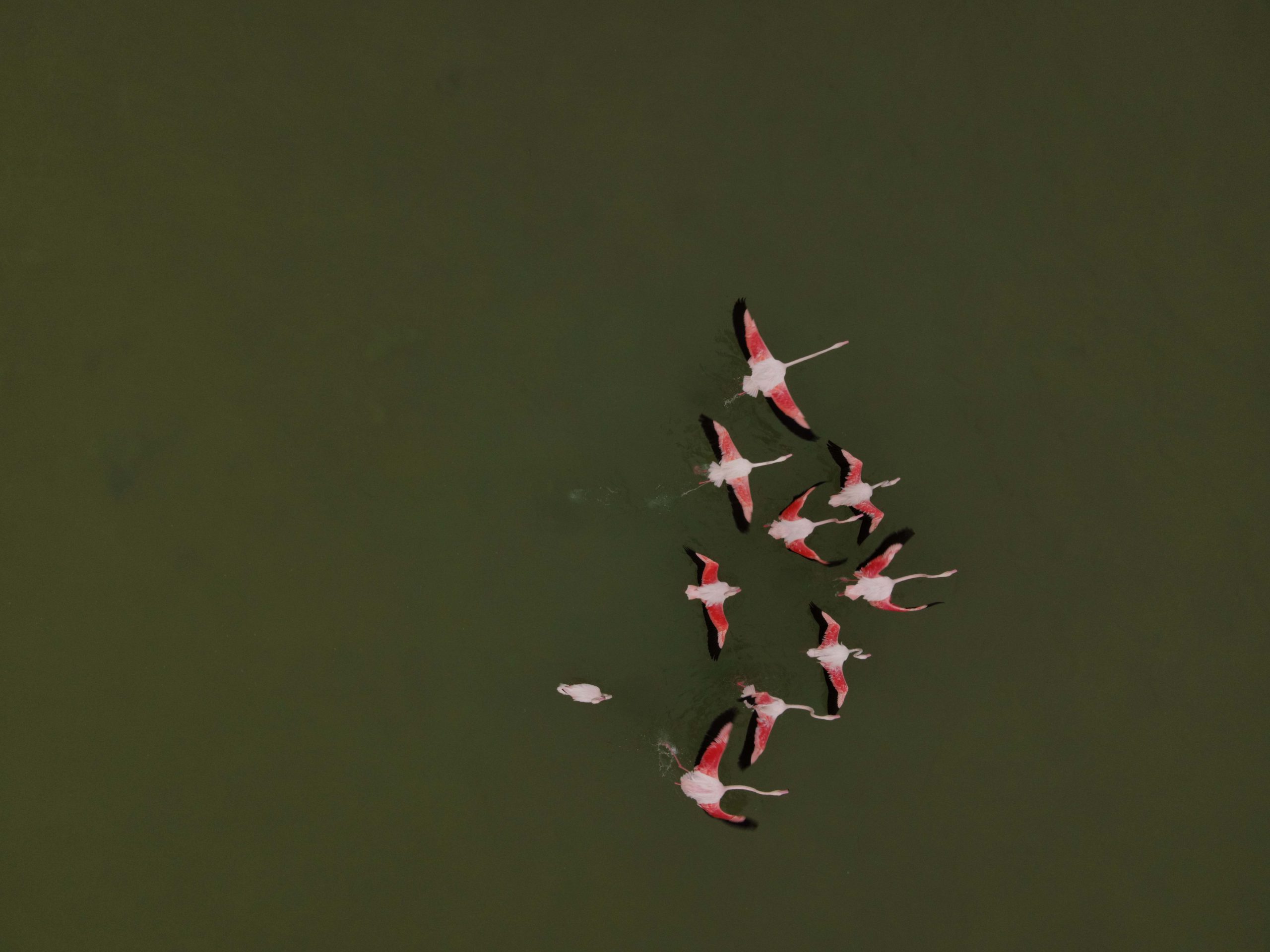
Nicknamed the Arabian Falcon, he is one of Qatar’s greatest living sporting heroes, seemingly defying gravity to fly through the air.
As the current world champion in high jump, Mutaz Barshim is also the nation’s most successful Olympian, and the man many schoolchildren aspire to be.
When he attempted the 2.43 metre jump in the Diamond League 2014 in Brussels, the crowd watched in awed silence as he took on Ukrainian Bohdan Bondarenko.
The two men were engaged in a tense standoff, rivals in high jump as the best jumpers in the world. Barshim’s fans erupted into joyous cheers as he cleared the bar, making him the second highest jumper ever after the Cuban record of 2.45 metres, set in 1993.
Barshim also won gold medals at the 2014 Asian Indoor Athletics Championships in China, and the 2014 Asian Games in South Korea. In 2016, he won a silver medal at the Olympics.
And in October 2019 – after overcoming an injury sustained competing in Hungary and ankle surgery – the 29-year-old became the first man to defend the world high jump title, with another spectacular win at the 2019 IAAF World Championships.
This took place in his home city of Doha with a world leading jump of 2.37 metres where his agility, ease, and expert technique awarded him a gold medal. The crowd at the Khalifa International Stadium went wild, with celebrations continuing for many days.
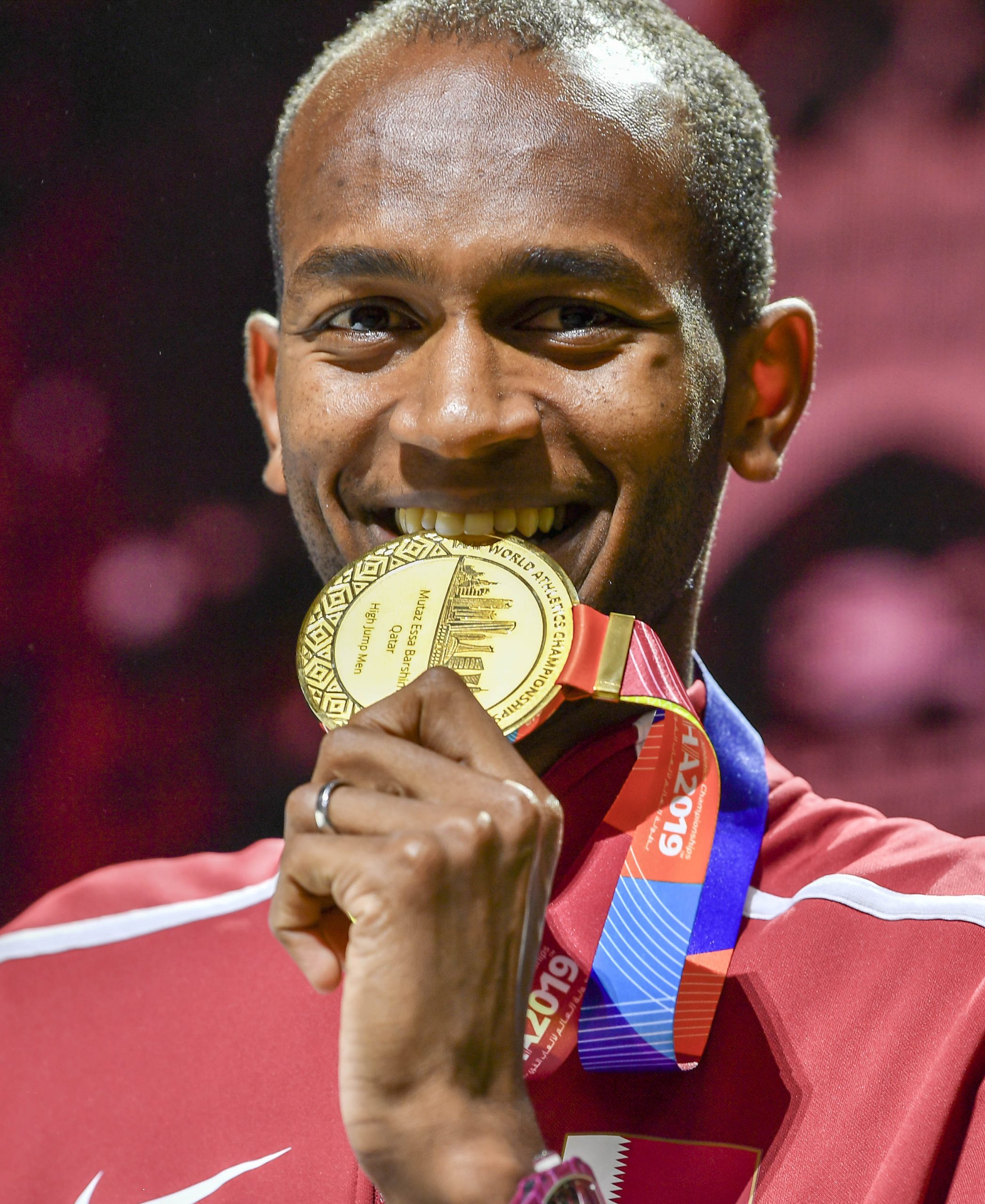
Appropriately, Mutaz’s name translates from Arabic as ‘Pride’ – and he is certainly the pride of Qatar.
“It was just a dream come true,” says Barshim, who wrapped himself in the national flag for a victory lap. “I was part of the delegation team when we applied to actually host the Doha Championships. We tried first in 2017, we did not succeed. It was won by London, where I won gold.”
“Then we won the election to host the 2019 Championships. For me, Doha is the number one place to compete. I wanted to make my family, my people, my country, everybody proud. That is why winning at home was like a dream come true.”
His Highness the Amir of Qatar was there too, and a now famous photo captures their victory embrace.
Barshim says of this high-level support: “It means so much to me. When you have that kind of tremendous support from His Highness himself, you can only have a great respect for him. He has so many responsibilities, but on that particular day he chooses to step down from all that and be present himself to support you. That is why I said to myself: I need to give something special.”
“Even winning is not enough. You have got so much respect for those people who come to support you and you want to give them something spectacular and I am glad I was able to deliver.”
Of his nickname, Barshim says that he does indeed sometimes feel like he is flying: “Oh definitely. At some moments, it feels like time just freezes, things go slow and at that moment when you clear the bar you feel like you are actually flying.”
Barshim joined the world of athletics early, beginning the high jump at the age of nine. After graduating from the Aspire Academy in 2009, Barshim met his Polish coach Stanisław “Stanley” Szczyrba who trains him in Doha.
One day, Barshim hopes to give back to youngsters following in his footsteps. He says: “Sport has given me a lot and it’s only right to give back. I want to pass on my experience to the next generations.”
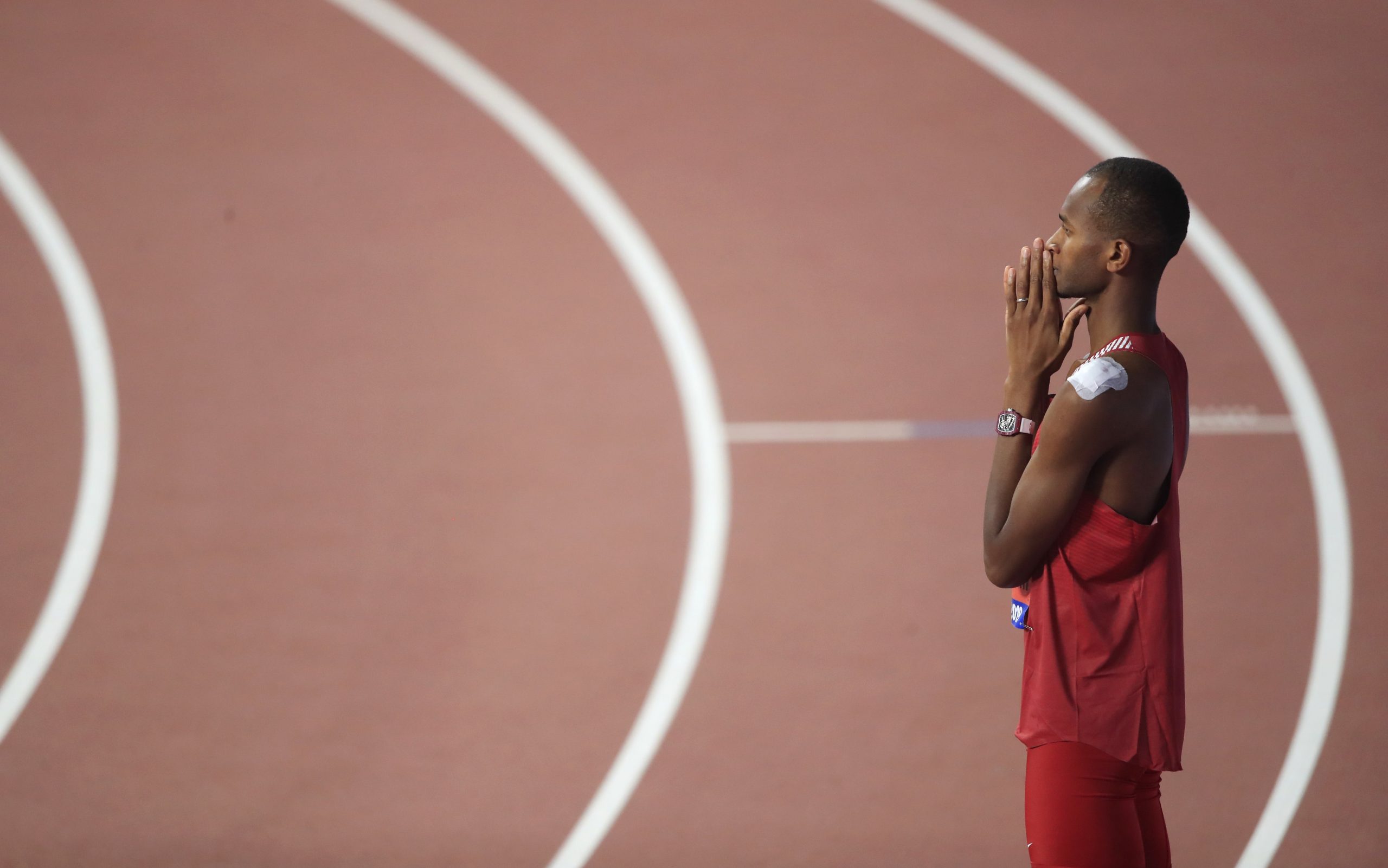
The FIFA World Cup Qatar 2022 is a big date for all Qatari sportsmen, no matter their discipline. Barshim explains: “Of course, I am excited, especially at home, we will all have a big role to play here, to make this event successful.”
“Everybody in the country becomes an ambassador automatically. We need to come together, make sure we all have fun and help the visitors that are coming here watch and enjoy and hopefully make positive memories.”
Then next year of course there is the Tokyo Olympics 2020. Barshim says the pressure is intense, explaining: “Everybody keeps telling me ‘there is no going back… bronze, silver…next has got to be the gold.”
“And I want to give this to everybody who supports me, to my country, my people, my team, my family and my friends, I want to give them that gold.”
One thing is certain: in his next drive for success, Barshim will certainly have the entire nation cheering him towards victory.
Dana Al Fardan is Qatar’s leading contemporary composer, musician, songwriter, and symphonic artist. She is the official composer for Qatar Airways and her first West End musical, Broken Wings, had sold-out shows in London and came to Doha last November.
Over two million people a month listen to this music, which uses the distinctive Arabic rebaba instrument, and Dana is one of the most widely listened to composers in the Middle East.
Her music has become the sound of Qatar, and she is a national icon, acting as a cultural ambassador for the country internationally.
And yet Dana did not have a traditional musical education, instead studying international relations and gemology, so that she could enter the family business.
A compulsory course in Arab studies ignited her love for the region, however, inspiring her to create music. Her sell-out show Broken Wings was based on the life of the poet Khalil Gibran.
Dana, whose next musical Rumi opens in 2020, says her pride in her home country provides inspiration for her art. “Qatar has a very unique place in the world and it has a very rich cultural heritage,” she says. “I want to tell the story of Qatar to a global audience. I’m very proud of my heritage and I want to show the world our colours.”
The Qatari sea-faring tradition is one element she has drawn on to create the innovative music for which she is famous.

“One of the things that I’ve personally taken away from Qatar was the pearl diving tradition,” she says. “I’ve incorporated that into my music to provide a new sound, a sound with a level of authenticity that is in demand in classical music with a character and a texture.”
“My grandfather’s background is in pearl trading. Percussion plays a pivotal role in the music of the sea, specific to pearl diving. There is a specific percussion pattern for when the boat leaves the shore, for when the boat is coming in, for when they’re lamenting their situation, they’re looking for the pearls, they find the pearls, they don’t find the pearls. And on top of that, there’s always a gentleman chanting.”
“So when I started to understand the sounds and the framework, I understood how to incorporate that on a more modern neo-classical orchestration to make that accessible and to tell that story to an international audience.”
She recently performed at the 2019 UN Day Concert in New York, and took inspiration from the children she met. She says: “I was asked by the UN to write a song to create a campaign with Qatar Charity for a refugee camp in Jordan. They were dealing primarily with Palestinian refugees. It was to create food baskets during Ramadan. I went with them to Jordan and I was absolutely blown away by the children that I met. They are highly ambitious, highly intelligent children, but life had dealt them a very difficult blow. And yet, they were incredibly optimistic.”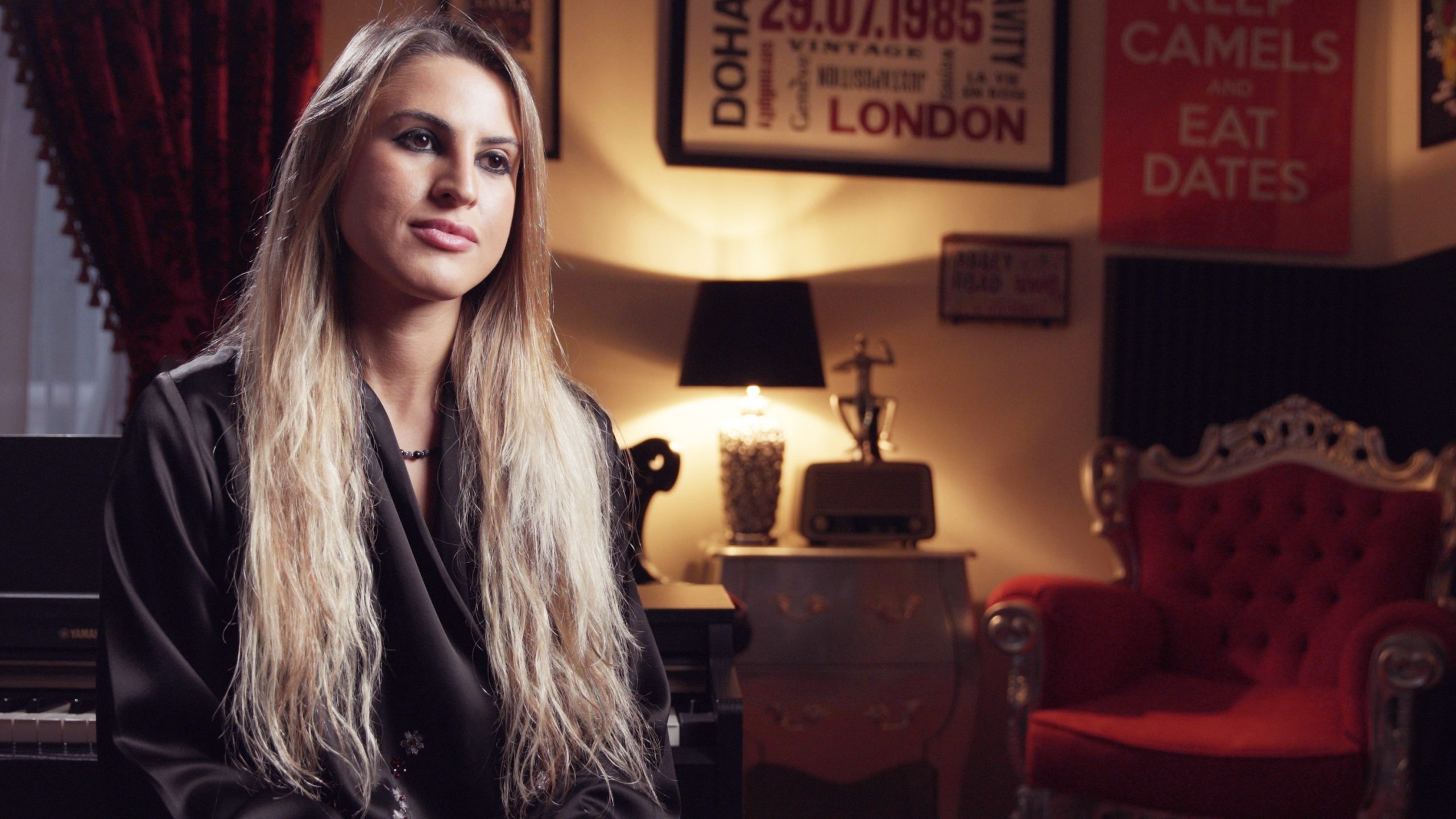
She is a musician, but also a businesswoman, and says: “My mandate is generally preserving Arab heritage in a way that is exportable to international markets.”
“My recent concert in New York, at the UN, featured a range of different sounds, different soloists, different instruments that are universal in their scope but that have a very distinctly Arabian feel. The message is the fact that music speaks any language, but then you will hear an accent or a dialect that is distinctive to the origins of the identity of that instrument or person.”
She adds: “Of course, individuality is very important. That’s what colours us. That’s what makes us interesting. That’s what makes us want to interact with other people. It’s just developing the tools to communicate regardless of the differences, to celebrate the differences. That’s the role of music. That’s what I’ve been trying to do. That’s the reason I want to tell the story of my country, Qatar.”
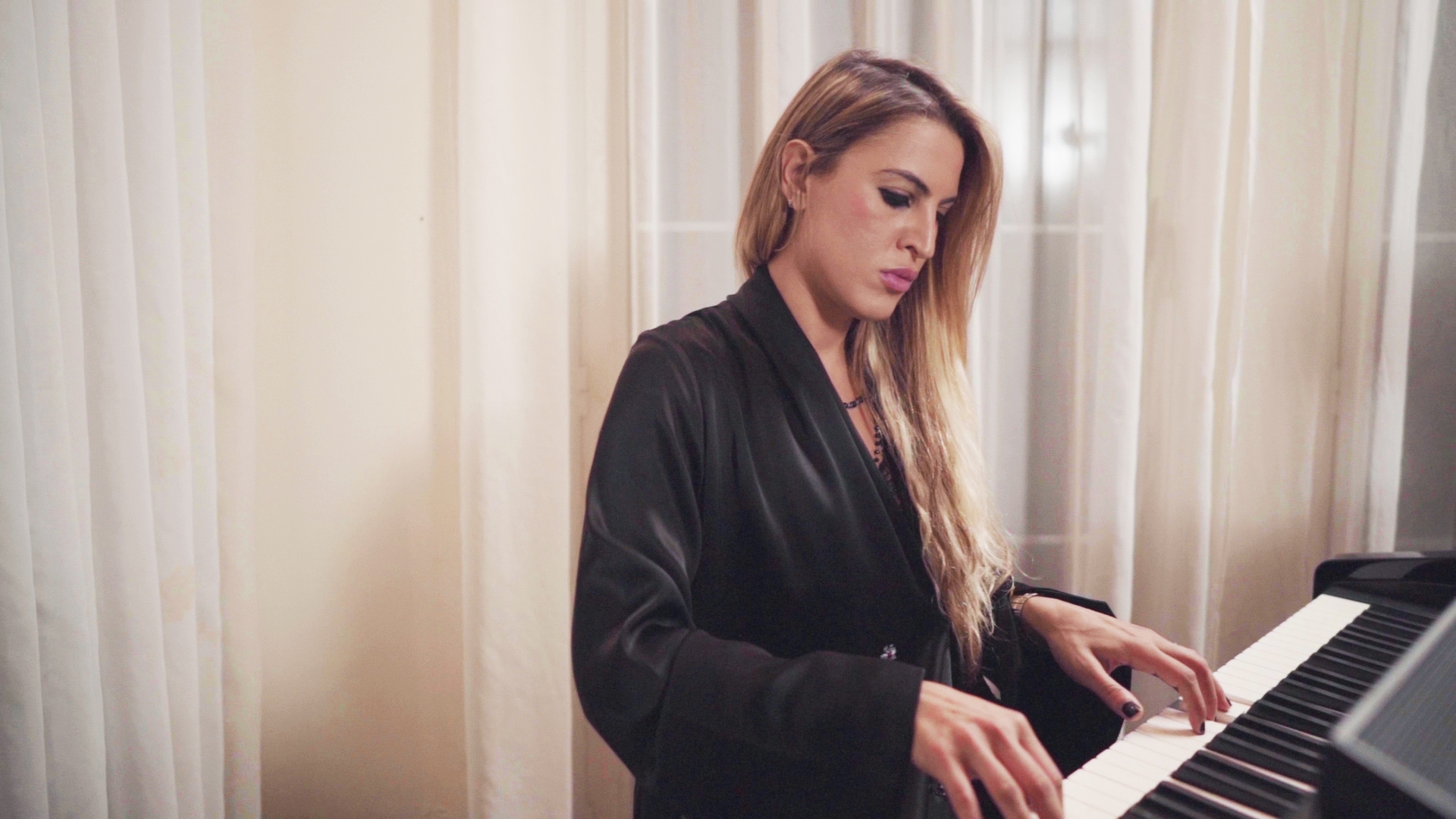
Celebrating a decade of musical excellence, the Qatar Philharmonic Orchestra (QPO) has become a symbol of cultural harmony and artistic prowess in the heart of the Middle East. Executive Director Kurt Meister talks about sculpting the orchestra’s journey from inception to global recognition.
The soaring chords cut through the air like a lone bird breaking the desert dawn. This is Qatar Airways’ signature music, created by Qatari composer Dana Al Fardan and played by the Qatar Philharmonic Orchestra. It is instantly recognisable to any traveller.
The Qatar Philharmonic Orchestra has more than one string to its bow, however. Founded by Her Highness Sheikha Moza bint Nasser, Chairperson of Qatar Foundation – of which the orchestra is a member – the orchestra plays an eclectic mix of classical and Arab music, and modern show-stoppers.
Kurt Meister, Executive Director of the Qatar Philharmonic Orchestra, has played a major role in completing the extraordinary task of constructing a world-class orchestra from scratch.
Originally from Germany, Meister was a member, and subsequently manager, of the Bavarian State Opera for 21 years in total, and also worked as the general manager of the Bavarian Symphony Orchestra. He was brought out of retirement to form the Qatar Philharmonic Orchestra.
“It was an incredible challenge”, he explained. “It was June 2007, Doha was not known for any orchestra, and yet I had to convince international musicians to come here. But now, if you ask these musicians, they think of Doha as their home.”
The Qatar Philharmonic Orchestra brings together musicians from 28 nationalities, including 14 Arab members. Navigating through a staggering 3,200 applications, Kurt meticulously selected 101 musicians, conducting up to eight auditions simultaneously. With a mere seven-month window, this task was not only a logistical challenge but also a testament to his commitment to assembling an ensemble par excellence.
“At first, I was nervous we wouldn’t get the applications,” says Kurt. “But they flooded in. The auditions are now blind, with musicians playing behind the curtain, which means they are selected by the orchestra on musical ability alone.”
The auditions demanded a gruelling international schedule, taking place in London, Madrid, Paris, Moscow, Cairo, Zurich and Vienna. Once completed, the selected musicians came to Doha with their families. Of the original orchestra, 80 percent of those musicians are still in place to this day.
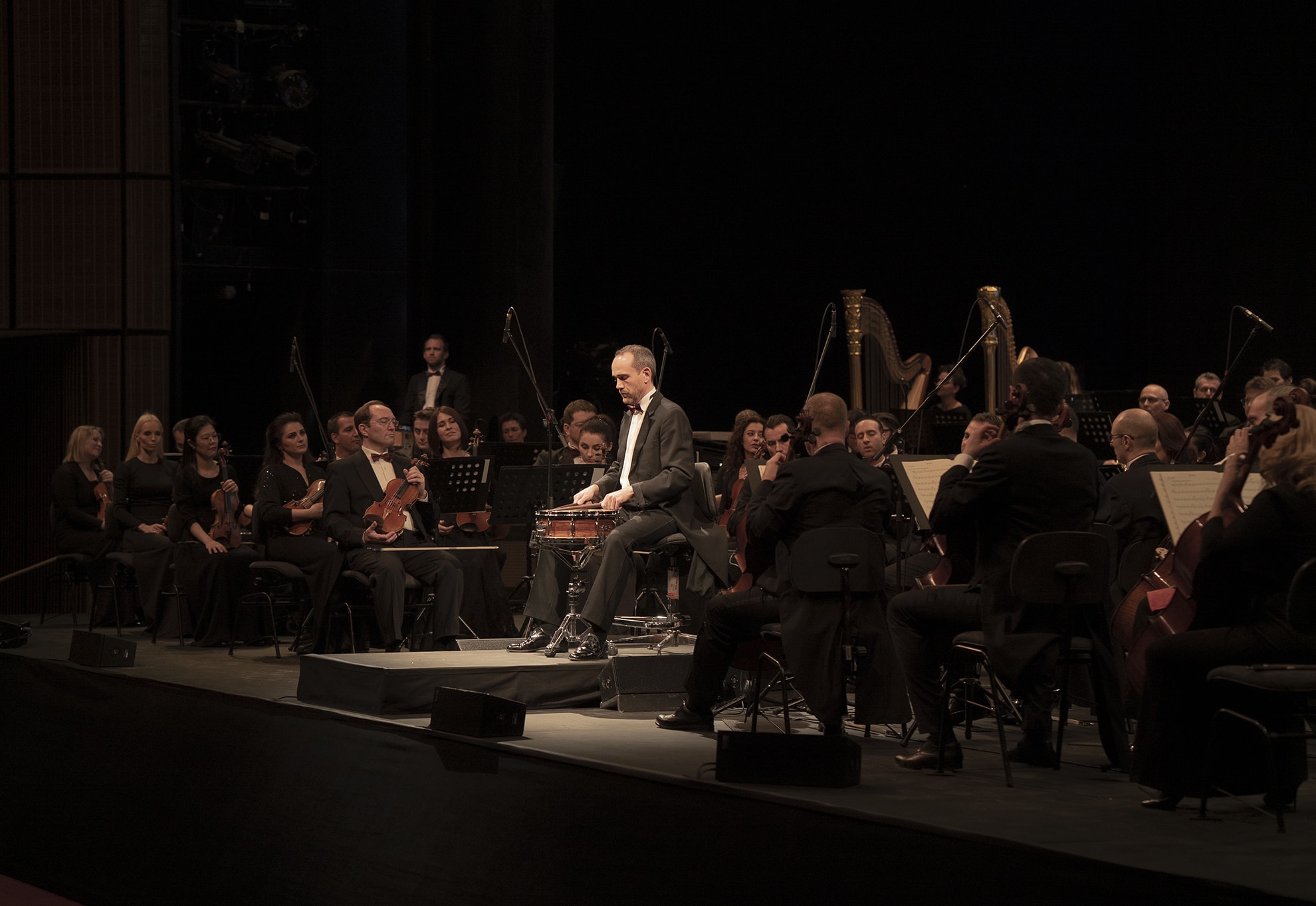
The orchestra has also developed its own distinctive style. Within the space of a few weeks, it performs everything from video-game music to a classical repertoire including the works of Haydn and Berlioz, and Arabic compositions.
The orchestra goes on tour often, most recently to Russia and China. “It is important for an orchestra to go on tours” says Kurt. “This is how Qatar Philharmonic Orchestra can, in terms of its artistic level, be compared to the best orchestras around the world”. In 2016, it played a sell-out tour featuring Rachmaninov’s piano concerto and Tchaikovsky’s Symphony No. 5 in London’s Royal Albert Hall at the BBC Proms Festival.
So how has the orchestra matured since its formation? As Kurt explains, during the philharmonic’s 10th anniversary concert, it performed the same programme, a composition by Maurice Ravel’s Bolero, as it did during its inaugural concert.
“But this time, the orchestra performed without a conductor. That has never happened. You could see the self-confidence of the orchestra. The drama was extraordinary.” All members of the orchestra are soloists, which demands the highest artistic level.
Unknown to Kurt during the 10th anniversary performance, which was broadcast live on television, the skin of the soloist’s drum was damaged. On the final bar, the skin broke.
“If it had happened three minutes earlier, we would have had to stop the concert,” says Kurt. “For my own blood pressure, I am so glad that I didn’t know at the time that that was happening.”
Her Highness Sheikha Moza was there for the orchestra’s first performance, and also for its 10th anniversary concert, allowing the Qatar Philharmonic Orchestra to showcase what it has achieved over the past decade.
Qatar Philharmonic Orchestra continues to balance its repertoire between Arab and Western music. It has achieved new heights by collaborating with local artists such as Wael Binali, Hamad Al Naama, Nasser Nasseb, and Dana Al Fardan. One notable project, ‘The Beginning,’ saw them recording on the Hamad International Airport runway, with a Qatar Airways A380 forming a majestic backdrop.
The orchestra has also conducted two airplane flash-mobs – when going on tour, it performs the music live on the plane its musicians are travelling on, to the surprise of other passengers.
For his part, Kurt has embraced Arabic music, including the rababa – the oldest Arabic instrument, dating from the eighth century, and made from a coconut shell with one string.
The musicians are a happy family of different nationalities. As they perform together, their closeness is apparent because of one reason: music. They have shared a momentous and highly successful musical journey. And Kurt says there have been noticeable changes in Qatar’s cultural scene since the orchestra’s establishment.
“At the beginning, there were less cultural events,” he says. “Now you have galleries, jazz clubs, different types of music. For each taste, you can find something. We have people of every age in our audience.”
“Our chamber music concerts at Qatar National Library and the Museum of Islamic Art have different kinds of audiences from the people we welcome at our regular symphony concerts. I am so proud of what the orchestra has achieved, and that there is an extraordinary cultural diversity in Doha now.”
Fahad Al Obaidly is a fashion designer, artist, and creative. He explains the language of creativity and his mission to promote design in Qatar.
To Fahad Al Obaidly, the delicate shimmer of silk forever evokes his mother.
The artist, designer, and filmmaker paints a vivid picture of a mesmerising woman seen through the eyes of a small child. “The inspiration behind what I do is my mother,” he says. “She would watch old Hollywood movies on the black and white TV, observe their clothes closely and sketch them, to then recreate the designs for herself.
“She idolised those screen stars, their confidence. She loved layers, and she wanted to express her femininity through her clothes. She loved silk because of how it made her feel as a woman. Fashion brought the femininity she had maybe lost through being a mother and career woman.”
These early lessons were the start of an extraordinary journey for Fahad. This journey has taken him through the fashion of the Ottomans, to the couture workshops of Milan, and the streets of Paris – and back to Qatar.
He explains: “I’ve always been interested in textiles. Early on, I did a project on Ottoman culture and how it informs Western design. I knew immediately this was what I wanted to do in life.
“My grandma told me: ‘Don’t do something because you can do it, but because you need to do it. That need will fuel you.’”
Fahad – whose three sisters are all artists – spent six years in Montenegro, Serbia, Macedonia, and Turkey, then Paris and Milan, where he studied.
“In Milan, they allowed me to go backstage and into the studios,” he says. “I learned fine tailoring skills. No one can compete with the Italians. It was a wonderful foundation.”
He returned to Qatar to design. “I specialise in menswear,” he says. “There are lots of men designing for women, but in this region, none designing for men.
“I want to make pieces that are part of your skin, soul, and identity. In Qatar, we love quality, with minimal designs made from high-end fabrics – and the finish needs to be perfect. Cashmere gives us that feeling.”
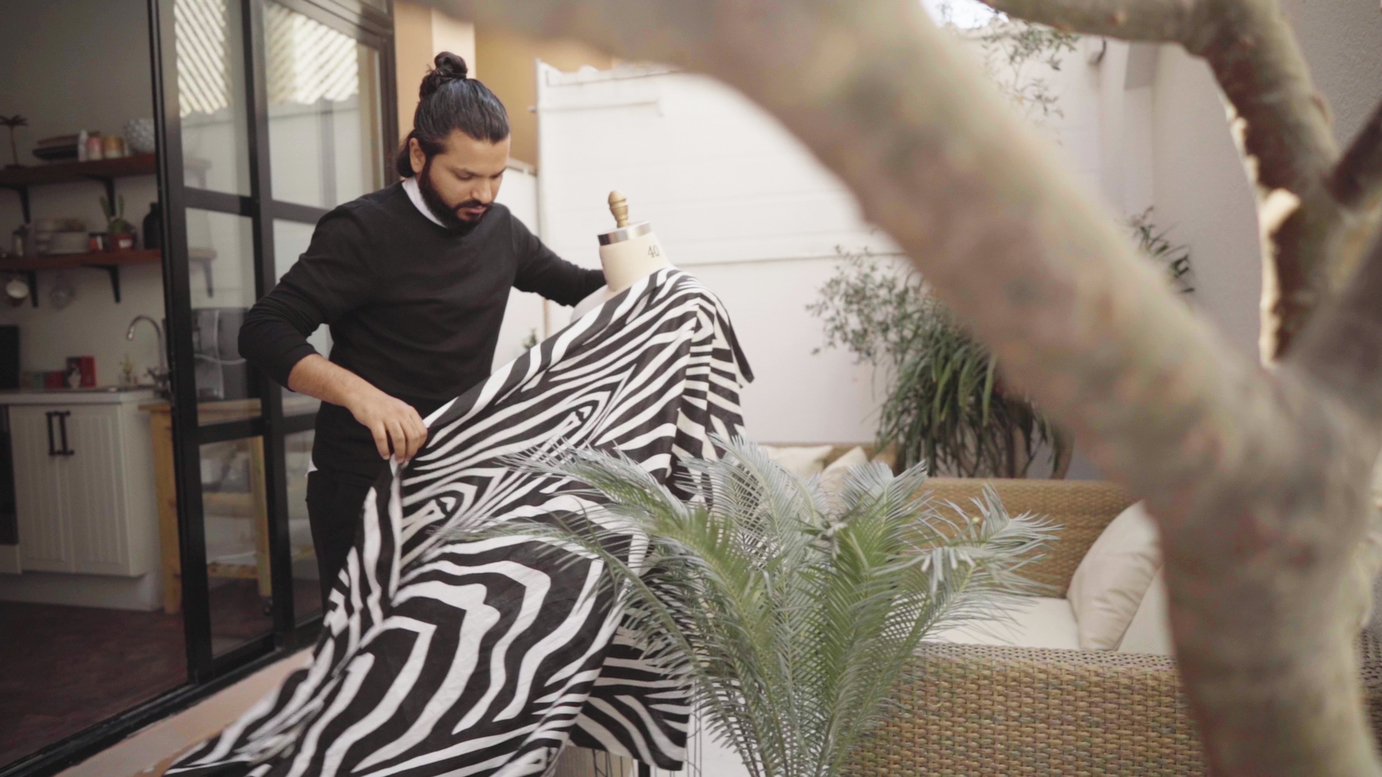
A residency at Doha Fire Station and a course in storytelling at the Doha Film Institute have both helped him to develop his skills.
“Clothing is all about storytelling,” he says. “Every day when you open your wardrobe, you choose how people perceive you. You see it is a random act, but actually, it is not. You choose clothes that represent the voice you want that day.
“Why am I dressing up? Who do I want to impress? Who am I? Your clothes give you cultural identity and status.”
He road-tests his designs in Doha’s coffee shops. “Qataris love coffee shops,” he says, “so that is where I do market research. I am a human mannequin, wearing my designs. People come and talk to me about them, and I find out what they like and what they don’t.”
“Fashion is always changing, but I keep my eye on my customers. I have never challenged people’s right to be traditional.”
Fahad founded the Qatar Fashion Society and runs a fashion incubator. “Designers come with their ideas, we help them to work out a business plan,” he says.
He has curated eleven art exhibits and now has over ten years of experience in fashion entrepreneurship, which he is keen to pass on.
He supports applicants of Fashion Trust Arabia, founded by Her Highness Sheikha Moza bint Nasser, which took place in Spring 2019 at Msheireb Museums and Doha Fire Station in the presence of world-renowned designers including Victoria Beckham.
Fahad explains: “Qatar is the biggest consumer in the luxury segment in fashion and now we want to produce here.”
Some 22 students graduate annually in fashion from Virginia Commonwealth University School of Arts in Qatar. These students need support upon leaving university, he explains. “While the school provides the know-how and design theory, when it comes to the business side of fashion, students are not equipped.
“We help them by matching them with production houses, public relations agencies, retailers, and department stores.”
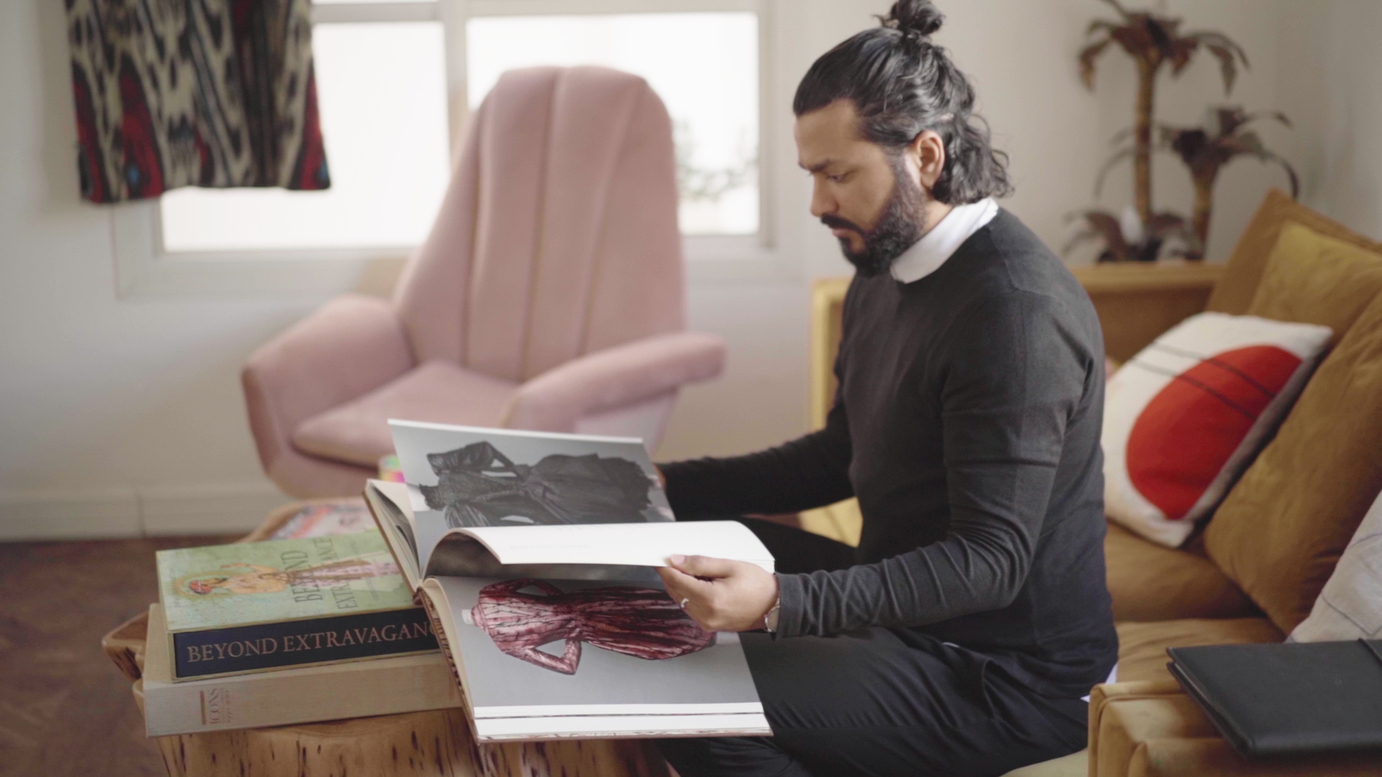
Personally, Fahad wants to continue promoting design in Qatar. His latest collection is inspired by the architecture of Doha. “The stripes represent Qatar National Library,” he says. “Driving around Qatar and taking photos inspires me and makes me proud.
“The process starts in my head, with mood boards and photos. I take elements I like and sketch them, then I select the fabrics and start designing.”
Pointing to a rail of beautiful, unique pieces, he says: “There is always a message, sometimes it is hidden between the lines. Is it the white taking over the blue, or is it the other way around?”
It has been a long road, and Fahad of course credits his mother with his success. “She was a powerful goddess mother,” he says. “Now, she says to me: you are my success story.”